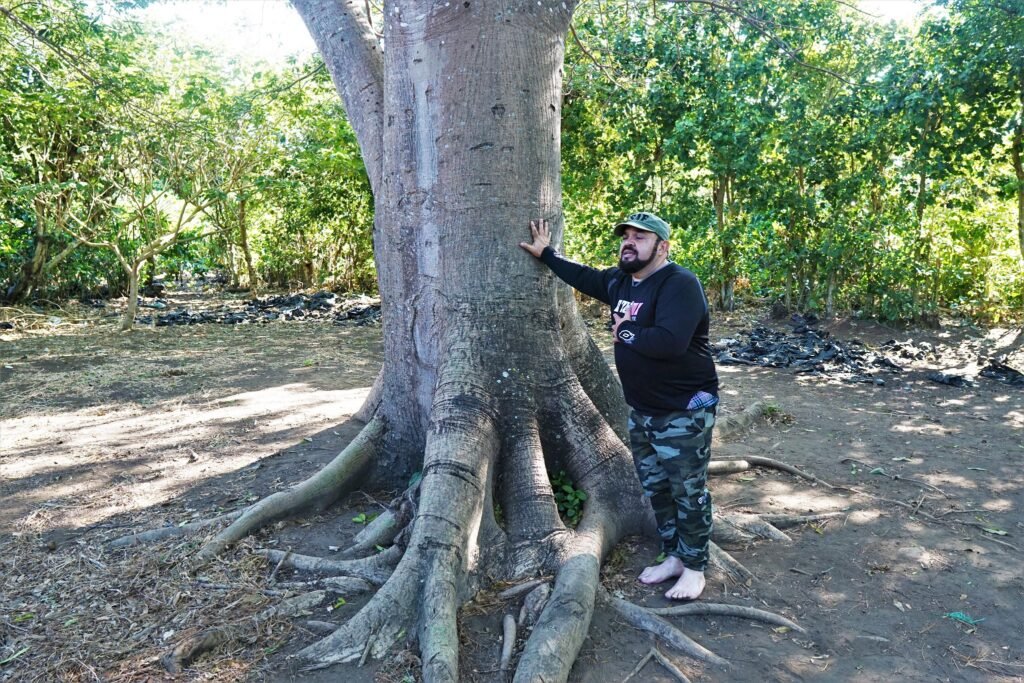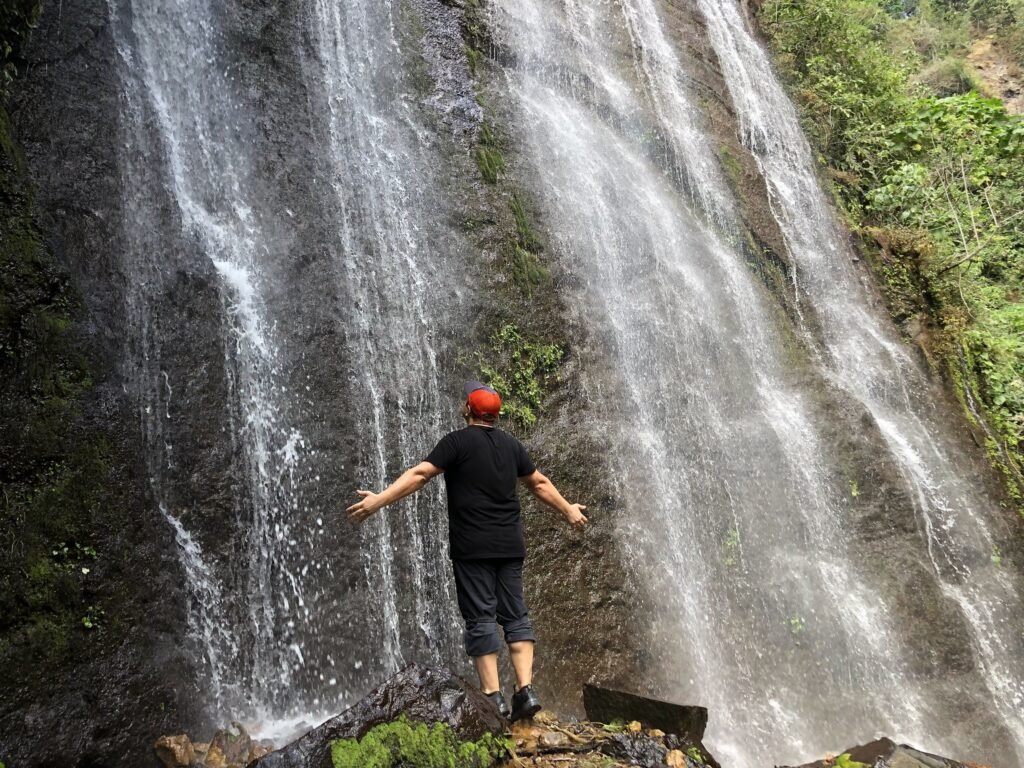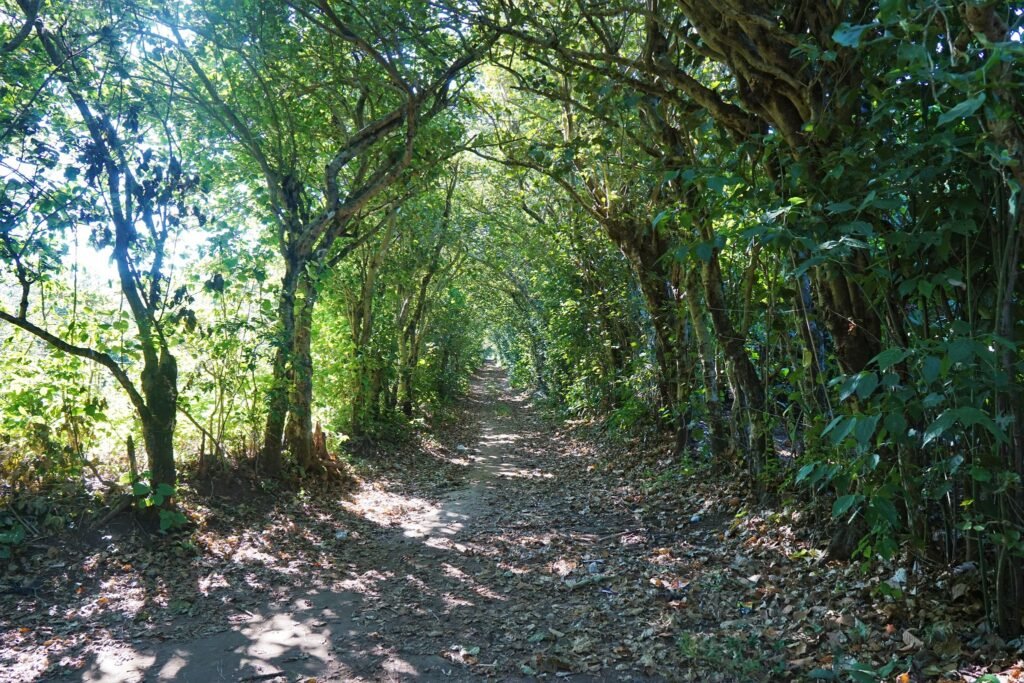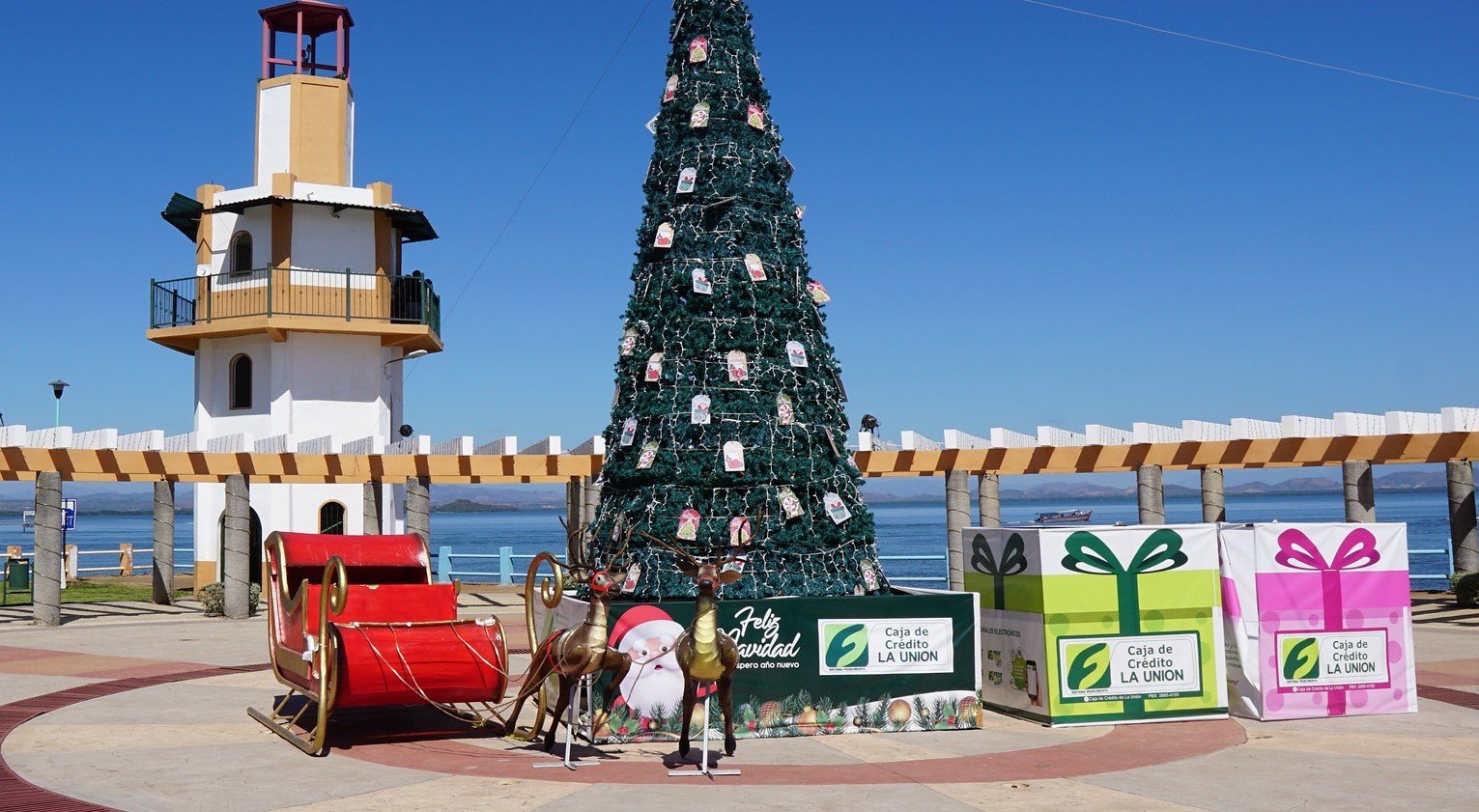If a foreign tourist does venture into El Salvador, he will inevitably come for one of two things – to surf or to visit Ruta de las Flores. As Victor is diligently working on his “surviving surfing” post, I will, in the meantime, describe one of the most magical regions of El Salvador.
In the western highlands, a long, winding road twists through the countryside along lush green hillsides and coffee plantations, from one colorful town to another. It’s called Ruta de las Flores, and in translation, it means “The Road of Flowers”. It might as well be called “The Path of Volcanoes”, “The Trail of Coffee Plantations”, “The Highway of Pupusas”, or “This Way to the Next Food Festival and Craft Fair”. Yes, the flowers are abundant, especially at the end of December when we visited, but pink, red, purple, and yellow flowers vibrantly blooming on trees and bushes lining the route were, somehow, not even the main attraction. The true heart of this region can only be found by leaving the route and venturing into the surrounding coffee plantations, mountains, volcanoes, and canyons. In other words, you have to go hiking.
“How much hiking are we talking about here?” I asked suspiciously, knowing that Victor has a tendency to schedule 26-kilometer hikes, immediately followed by 19-kilometer hikes, then followed by some incredibly unreasonable glacier climbing the very next day.
“It’s a Seven Waterfall hike and will take six, seven hours at most.” He said. “And that’s just Tuesday…”
I had, by this point, survived 39 countries. I’ll be damned if I let the 40th kill me.
Once we got to Ruta de las Flores and settled in our Airbnb, a beautiful cabin in a luscious coffee plantation right outside of Juayua, Victor started searching for guides to take us hiking.
“I think,” he said, “instead of the Seven Waterfall hike, we do a Three Waterfall hike with this guide our hostess recommended.”
“Sounds great!” I exclaimed. “How long is that going to take?”
“Six, seven hours.”
I went to bed somewhat confused at the Salvadoran rate of waterfalls per hour.

The next day we got up early, packed water and some food we purchased the night before at a market, and hopped into our car. We agreed to meet Carlos, our guide, in a restaurant his mother runs, just a few kilometers away from our Airbnb. His mother, a small eighty-year-old woman with endless energy and a beaming smile, cooked us a traditional Salvadoran breakfast of eggs, beans, cheese, fried plantains, tortillas, and coffee. From a laminated print-out on the wall crowned with her picture, we learned her inspiring life story – raising three sons on her own, trying to survive on meager earnings from selling her homemade cheese to opening the first woman-owned cheese store in her town, and eventually a restaurant. Having already finished our breakfasts and commented to each other how good the cheese was, we were duly impressed.
Carlos showed up soon after and provided us with the required hiking equipment – hard hats and walking sticks. He didn’t speak much English, but Victor’s Spanish was more than enough to cover the difference. His mother waved goodbye to all of us from the stoop of the restaurant as we set off walking, followed by the barking and howling of neighborhood dogs. After about a kilometer of walking through town, we entered a coffee plantation and Carlos launched into a long lecture on the life cycle of a coffee bean – from planting to growing, from collecting to processing. He talked about being on a coffee collective committee where small farmers worked together to sell their coffee at competitive prices. Victor asked if this was his main job, and Carlos shook his head.
“I was a lawyer for many years,” he said. “Very stressful job…”
“Oh, I know all about that!” Victor laughed.
“My law firm worked collections, and I often had to bring debt collection lawsuits against very desperate people. There were numerous death threats directed at me and my family.”
Victor’s eyes got wide as he whispered, “Never mind…”
Carlos retired from being a lawyer, started hiking, lost thirty pounds, and now fills his time by working on a coffee collective and his own small coffee farm, running a hostel for tourists, working as a hiking guide, and in his spare time, writing poetry. Seems like Carlos has learned a bit about hard work from his mother.
In a large clearing, Carlos stopped near a tall, widely branching tree and started taking off his shoes. Victor and I stared quizzically. Running his hands up and down a giant trunk, Carlos explained that ancient Mayas considered these trees to be sacred, with the top of such a tree going all the way into the heavens to reach their gods, and the roots of the tree burrowing deep into the ground to reach their ancestors. Mayas would have ceremonies at such trees, their feet bare to connect to ancestors and their hands wrapped around the trunk to connect to gods.
Carlos closed his eyes and breathed deeply.
“There is an energy that trees give you, the energy you can feel running through your whole body.

Slowly, the coffee plantation gave way to a jungle of trees descending into a deep gorge. We followed Carlos down a narrow, steep path into the canyon. As the path got steeper and narrower, we had to hold on to tree branches to aid our way, with Carlos occasionally pointing at a bush or tree and calling out, “This one is poisonous!” as Victor and I ducked out of its way. Occasionally, I had to sit down and slide down a steep incline on my butt, to prevent slipping in an especially precipitous spot. My hiking shoes kept sliding from under me, sending a cascade of small rocks down into the gorge. At the final stage of descent, Carlos tied a rope around a tree and showed Victor and me how to rappel down the sharp and slippery slope.
At the bottom of the canyon, we ditched our backpacks and shoes and stood, ankle-deep in the cool waters of the first waterfall. From there, it was just a short hike to the second waterfall, called a “Rainbow Waterfall” for the multiple rainbows reflecting on the rock wall from the angle of the water and sun rays. Then, after trekking through a bubbling brook and slippery stones, we came to a third waterfall where the path we had been following took a sharp climb up the slick rock wall.
“This way?” I asked Carlos tentatively.
He laughed and shook his head. This way, he explained, was only for those who had specialized equipment or a lack of survival instinct.
Sitting on a large stone with my feet submerged in water and staring up at a shimmering waterfall, I was full of hope.
“Maybe we can do a Seven Waterfall hike tomorrow?” I asked Victor. He noncommittally shrugged.
I had completely forgotten one little thing. The hardest part of any hike is the ascent, and the ascent was waiting for us as we marveled at the waterfalls at the bottom of the gorge.


The moment we started climbing back up, I realized my mistake. I wasn’t going hiking tomorrow. I didn’t even know how I would survive today. The slope was somehow even sharper and more slippery than during the descent, but the worst part about this climb was that it was completely impossible to rest. Any hike, no matter the difficulty, can be made easier by taking frequent breaks and resting until your heart is no longer jumping out of your chest. But here, any attempt to stop moving was followed by the ground beneath my feet shifting, sliding, and threatening to plunge me back into the ravine. Forced to keep moving, I huffed and puffed until finally reached a tree large enough to support my weight. I wrapped my hands around the trunk, planted my feet as firmly on the ground as I could, and closed my eyes.
“Julia is not tired. She is just performing an ancient Mayan ceremony,” Victor explained to Carlos, and they both laughed.
“The tree… is… giving me… energy…” I gasped.
We finally climbed out of the canyon, gave away the uneaten sweets from our lunch to local children helping their families with coffee picking, and slowly trekked back through the coffee trees. This time, Carlos took a different path through the plantation to show us different views. As we walked, our surroundings suddenly started to look familiar.
“Wait a minute!” Victor exclaimed. “This is our plantation! That’s our Airbnb right there!”
He pointed at the gate a few feet away, and it was, in fact, the entrance leading to our small cabin. Turns out the Three Waterfalls hike was only a few kilometers from where we were staying, and we were hiking through the coffee plantations owned by our Airbnb hostess.
Without any further explanation, I yelled “Gracias! Adios!” to Carlos and ran to the gate.
“But our car is in town!” yelled Victor. “I guess I’ll pick it up…”
I ran straight into the shower, dropping my dirty clothes on the floor and washing off layers of dust and caked-on mud from my skin and hair. Forty minutes later, Victor walked in to find me sprawled out on the bed, almost asleep.
Chuckling, he told me the following story. He and Carlos headed back into town, exhausted from the long hike, with Carlos wistfully describing how his mother had certainly prepared some fresh cheese for his late lunch. As they approached the restaurant, his mother spotted them from the window and ran out to greet them. Before they could say anything, she threw her hands into the air and exclaimed, “Donde esta chica?? (Where is the girl??) Victor and Carlos both burst out laughing.
I could just imagine this poor woman thinking that her son forgot one of the tourists at the bottom of the gorge.
Coming up next: Victor Becomes a Surfer for a Day.


